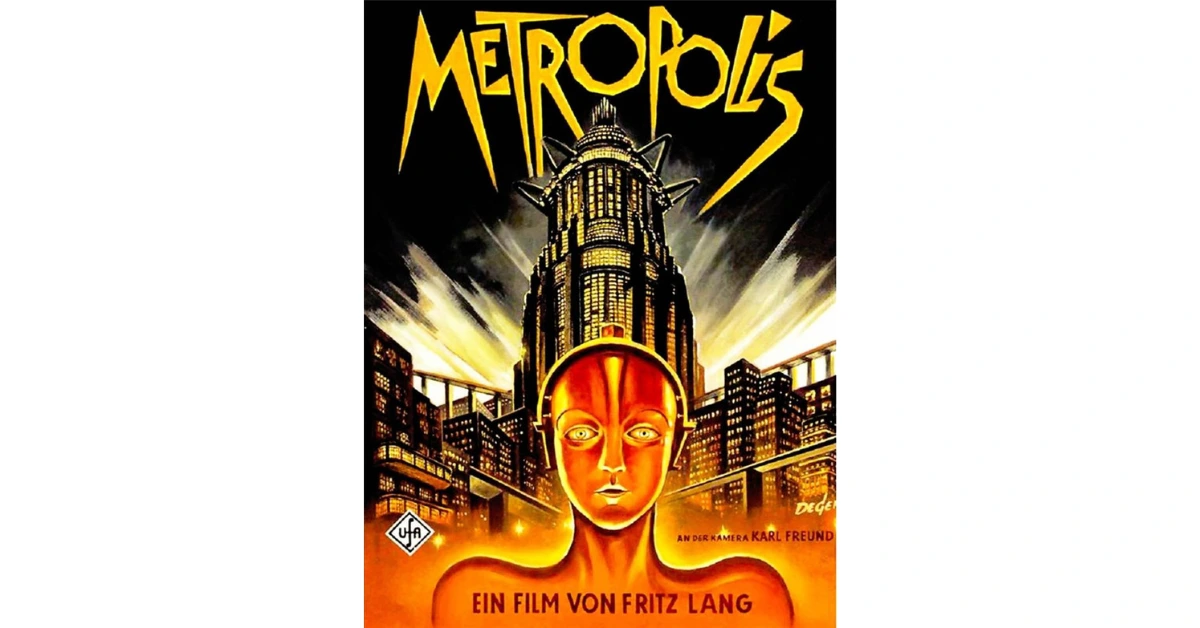I found myself diving into the depths of forums, scrolling through captivating Pinterest boards, and soaking in the vibes from vintage sci-fi art enthusiasts. Why? To unravel the mesmerizing tapestry of vintage sci-fi art, capturing the essence of a future that once was.
So, if you’re ready to journey through the captivating world of vintage sci-fi art and witness its stunning evolution, buckle up—because we’re about to delve into the breathtaking visual history that shaped our futuristic imagination. Let the vintage sci-fi art odyssey commence!
The Journey of Vintage Sci-Fi Art
Vintage sci-fi art, rooted in early sci-fi literature, has undergone a captivating transformation over the years. Originating from the illustrated depictions of stories by H.G. Wells and Jules Verne in the late 19th and early 20th centuries, the genre found a visual standard in pulp magazine cover art of the 1920s and 1930s.
This era’s artworks, featuring space travel, alien encounters, and futuristic cities, served as a portal for readers to visualize fantastical tales. The mid-20th century saw a dynamic evolution, marked by optimistic aesthetics characterized by vivid color palettes and bold illustrations.
Iconic artists like Frank R. Paul and Virgil Finlay played pivotal roles in defining vintage sci-fi aesthetics, leaving an indelible mark on the cultural lexicon.
Iconography in Sci-Fi Art
In vintage sci-fi art, a unique visual language captures the genre’s essence. It unveils familiar themes, aliens, and futuristic ideas, pushing the limits of our imagination.
Common Themes and Subjects
Aliens and Futuristic Concepts
Classic Sci-Fi Art Techniques

In the realm of classic science fiction art, the mastery behind brushstrokes and compositions is as crucial to the narrative as the story itself. Vintage sci-fi art often centers around dynamic oil paintings, leveraging the luminosity and depth of oil paints to bring intricate detailing to otherworldly landscapes.
This technique, reminiscent of vibrant pulp magazine covers, immerses readers in atmospheric effects, enriching the sci-fi art of the Golden Age. Additionally, diverse techniques like mixed media and collage play a vital role, blending traditional painting with various materials to create layered compositions.
Collage, especially in vintage sci-fi art, juxtaposes snippets of reality to construct expansive, speculative landscapes, breathing life into the boundless possibilities of science fiction narratives.
Notable Sci-Fi Artists and Works

Within the rich tapestry of vintage sci-fi art, there exists a pantheon of artists whose visionary work has shaped the genre. We explore the vanguards of this fantastical realm and their seminal pieces that continue to inspire awe.
Influential Vintage Sci-Fi Artists
Landmark Sci-Fi Artworks
- Metropolis (1927): The film’s poster art by Heinz Schulz-Neudamm is an astonishing work, embodying the film’s groundbreaking aesthetic.
- Blade Runner (1982): With its neon-soaked visual style, Blade Runner’s concept art by Syd Mead was seminal in crafting the movie’s dystopian look.
- Doctor Who (since 1963): The long-standing British series has featured a host of art in various forms, from the targeted retro appeal of its early posters to the dynamic and colorful modern incarnations.
Collecting Vintage Sci-Fi Art
As we delve into the world of vintage sci-fi art, we’ll discover the nuances of print identification and proper methods to preserve and showcase these unique pieces. Our focus will be on understanding the print materials and the importance of framing, as well as evaluating the rarity and value of original sci-fi artwork.
Understanding Sci-Fi Art Prints
When we assess vintage sci-fi art prints, we look for certain indicators that signify authenticity and value:
- Paper Quality: Higher-quality paper often indicates a more authentic vintage sci-fi art print.
- Printing Technique: Examination of the printing technique is crucial for longevity and color fidelity, with lithography being common for vibrant and lasting colors.
- Signature and Edition Marks: Recognition of signatures, edition numbers, and other marks contributes to assessing a print’s rarity and value.
Preservation and Display of Artworks
Preserving vintage sci-fi art demands careful consideration of materials and display conditions. From archival-quality framing with UV-resistant glass to deliberate placement decisions, these guidelines ensure the longevity and vibrancy of our cherished collection for generations to come.
- Archival-Quality Materials: Use materials that won’t degrade paper or ink, such as acid-free matting and UV-resistant glass.
- Complementary Framing: Choose frames that enhance the art, such as wooden frames for a retro aesthetic.
- Archival Tape for Mounting: Ensure prints remain in pristine condition during mounting with archival tape.
- Deliberate Placement: Avoid high humidity and direct sunlight during the display to prevent warping or fading.
- Longevity and Vibrancy: Adhering to preservation guidelines ensures the vintage sci-fi art remains vibrant for future generations.
Contemporary Sci-Fi Art Forms

In our exploration of contemporary sci-fi art forms, we focus on the innovative use of modern technology to depict speculative futures. From ethereal digital landscapes to transformative photography, the genre is experiencing a dynamic renaissance.
Digital Art and 3D Rendering
We have witnessed a significant transformation in sci-fi art through the advent of digital art and 3D rendering. Artists now harness cutting-edge software to generate intricate designs that push the boundaries of imagination.
These creations often feature abstract space concepts and futuristic elements, fully embracing the essence of modern sci-fi. The level of detail and depth achieved in digital compositions has made this medium a dominant force in the sci-fi art community.
Sci-Fi Photography
Sci-Fi photography, on the other hand, brings speculative concepts into a form that can often feel more immediate and tangible. Through the use of advanced editing techniques, photographers blend reality with fantastical elements, producing works that challenge our perceptions.
These pieces may depict altered realities or portray modern interpretations of classic sci-fi themes, highlighting a symbiosis between existing environments and abstract space artistry.
The Market for Vintage Sci-Fi Art

In the realm of vintage collectibles, demand for sci-fi art has established robust online marketplaces and fostered active communities where buyers and sellers converge.
Online Marketplaces and Auctions
We observe a dynamic presence of vintage sci-fi art on online marketplaces like Etsy, where a variety of pieces from retro science fiction posters to printable celestial art is accessible. Here’s a quick glance at what one might find:
- Digital Art: Printable retro-futurism pieces, starting from $7.80.
- Physical Prints: 2024 vintage sci-fi calendars and beyond, with prices averaging around $24.95.
Etsy isn’t the only platform; various art auctions also present opportunities to acquire rare and original sci-fi art, often authentic pieces from the golden age of science fiction. For example, if you are looking for vintage sci-fi art for an album cover, you can have a look at CAM.
Connecting with Sci-Fi Art Communities
Our community engagement shouldn’t be overlooked. Platforms like Facebook host pages and groups dedicated to vintage sci-fi art, boasting significant followings. If you are looking for an artist yourself, Artstation could be the right address for you. These spaces allow us to engage with fellow enthusiasts, sharing knowledge, and just talking about the fascination of vintage sci-fi art.
Sci-Fi Art in Vintage Home Decor

Incorporating vintage sci-fi art into home decor adds a distinctive character and can transform a space into a nostalgic haven. It’s about weaving the essence of futuristic imagination with the charm of past aesthetics.
Sci-Fi as a Stylistic Choice for Interiors
Follow these 7 steps to integrate vintage sci-fi art into your home:
- Curate Purposefully: Choose art that aligns with your decor, considering colors, periods, and aesthetics.
- Minimalist Marvels: Opt for bold mid-century sci-fi posters in minimalist spaces.
- Eclectic Showpieces: Create a captivating gallery wall with varied vintage sci-fi prints.
- Balance Matters: Complement, don’t clash; let art extend your home’s narrative.
- Sci-Fi Stylistic Direction: Enrich your space with creativity and inspiration.
- Beyond Wall Decor: Infuse fantastical touches with retro futuristic art or classic sci-fi prints.
- Subtle Otherworldly Touch: Use sci-fi-themed wallpaper for a gentle genre nod.
Explore our articles on “Vintage Room Ideas 2024” and “Vintage Maximalist Decor” for more insights on vintage decor.
The Future of Sci-Fi Art

As sci-fi art brought us the first ideas and futuristic images of the universe, I am excited about what the art itself will be like in a few years. Artificial Intelligence will surely have some impact on it as well.
Emerging Trends in Sci-Fi Imagery
Visual Synthesis of the Real and the Imagined: The lines between sci-fi and surreal art are blurring, as we start to incorporate more abstract elements into our portrayals of the future. This fusion creates striking and thought-provoking imagery that challenges our perceptions of reality.
Integration with Science and Technology: Observing the Orion constellation, we’re reminded of our enduring fascination with the cosmos. Modern sci-fi art captures this by accurately representing celestial objects within fantastic and imaginative contexts.
Sci-Fi Art and Virtual Reality
Immersive Experiences: Virtual reality is reshaping how we interact with sci-fi art. This technology allows us to step inside the artwork, offering a full 360-degree exploration of futuristic landscapes and narratives.
Interactivity and Personalization: Sci-fi artworks in virtual reality become interactive experiences, where viewers can influence and alter the art around them. Futuristic wall art is no longer static; it’s becoming a dynamic, participatory form of expression that we can shape to reflect our individual experiences.
FAQ on Vintage Sci-Fi Art
What Vintage Sci-Fi Art styles were popular?
Bold, imaginative works often depicted space travel, futuristic cities, alien worlds, and technology. Retro-futuristic visions of gleaming silver spacecraft and sleek architecture reflected post-war optimism.
Where can I find Vintage Sci-Fi Art examples?
Many books collected the era’s art, like “Sci-Fi Art: A Graphic History”. Magazines like “Amazing Stories” showcase works. Public domain archives online also provide access to these nostalgic visions of tomorrow.
What influenced the Vintage Sci-Fi Art genre?
Groundbreaking films like “2001: A Space Odyssey” and “Planet of the Apes” inspired artists to craft equally enthralling illustrations of humanity’s future. Writers like Asimov and Clarke described technologies we now use daily.
If you liked our article about Vintage Sci-Fi Art, feel free to drop us a comment below.








